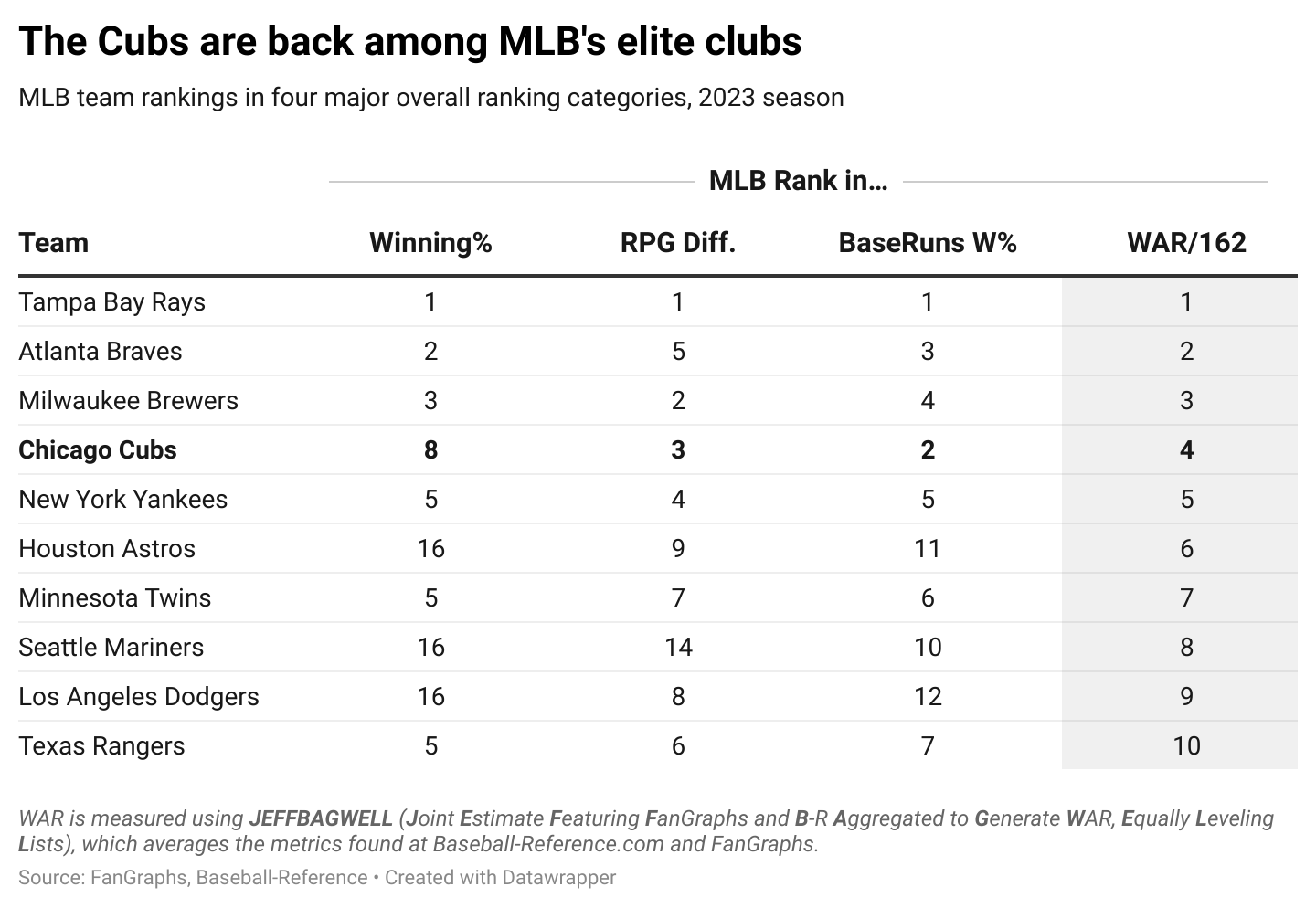The Cubs' Turnaround Might Already Be Here
After demolishing their championship core in 2021, Chicago's on-the-fly rebuild is paying dividends.
A few summers ago, it was looking like the Chicago Cubs’ mid-to-late-2010s run would be one of the biggest missed chances at a dynasty in baseball history. Yes, the Northsiders won their long-awaited championship in 2016, beating the Cleveland Indians in a seven-game all-time classic of a World Series. But there was always a feeling that the Cubs could (and should) have done more with the young, mega-talented core Theo Epstein had assembled in Chicago. Instead, almost every part of that group was gone within 5 years, punctuated by the 2021 trades that scattered Kris Bryant, Anthony Rizzo and Javier Baez to the MLB winds.
The Cubs might not need to wait 108 years before contending again, however. After executing the near-final teardown of the 2016 team, Chicago’s front office got to work on rebuilding the franchise’s next winner — and it may be arriving already this season.
The Cubs’ current 9-6 record is fine, good for second in the NL Central behind the Milwaukee Brewers. But peek underneath the hood, and we see a team that has been even better than its wins and losses suggest. While Chicago is no Tampa Bay, the Cubs are third in runs-per-game differential (+1.67), ahead of the Yankees, Braves, Dodgers and Mets (among plenty of others). The Cubs also rank second behind the Rays in BaseRuns-predicted winning percentage — an even more telling indicator of a team’s performance, since it strips away lucky factors in a team’s performance — and, along similar lines, sit fourth in Wins Above Replacement per 162 team games.
In fact, by WAR per 162, Chicago has been playing roughly as well in the early going of 2023 (57.2 WAR/162) as it did in its banner season of 2016 (59.1 WAR/162), when everything at Wrigley Field clicked into place just right.
The skeptical (or maybe Cardinals fans) among us might chalk this up, at least in part, to early-season hot streaks that may not be representative of a team’s full-season expectations. And it’s true that Chicago is making a big leap from its 19th-place WAR finish last season, so some regression to the mean might be inevitable. (For instance, we probably would not expect Patrick Wisdom to maintain an 1.139 OPS all year long.) But there are also reasons to think the Cubs are seeing success again because they’ve genuinely upgraded their talent a lot since the Great Chicago Fire (Sale) of 2021.
Over the past two MLB offseasons, I’ve tracked how much net WAR every team added or lost from the previous season. In the winter of 2021-22, the Cubs added the most net WAR of any team in baseball, then followed that up with the fourth-most net WAR added in the 2022-23 hot stove season. So across those two offseasons, the Cubs added 23.2 total net WAR, which ranks No. 1 in MLB — and that figure doesn’t even include the additions of players like outfielder Seiya Suzuki, who had no major-league WAR before joining Chicago from Japan.
It hasn’t been cheap; Chicago also spent $472.2 million (the 7th-most in baseball) over those two offseasons, per Spotrac. But all of these dealings have helped the Cubs get MLB’s fifth-most WAR from external acquisitions in 2023 so far, to go with the 9th-most WAR from homegrown talent.
While it remains to be seen how well Chicago can hold up in battle against Milwaukee — and St. Louis, despite its uninspired start — over the entire season, the early indicators are in. And they say that the Cubs didn’t have to hibernate very long before picking up where their previous not-quite-dynasty left off.







